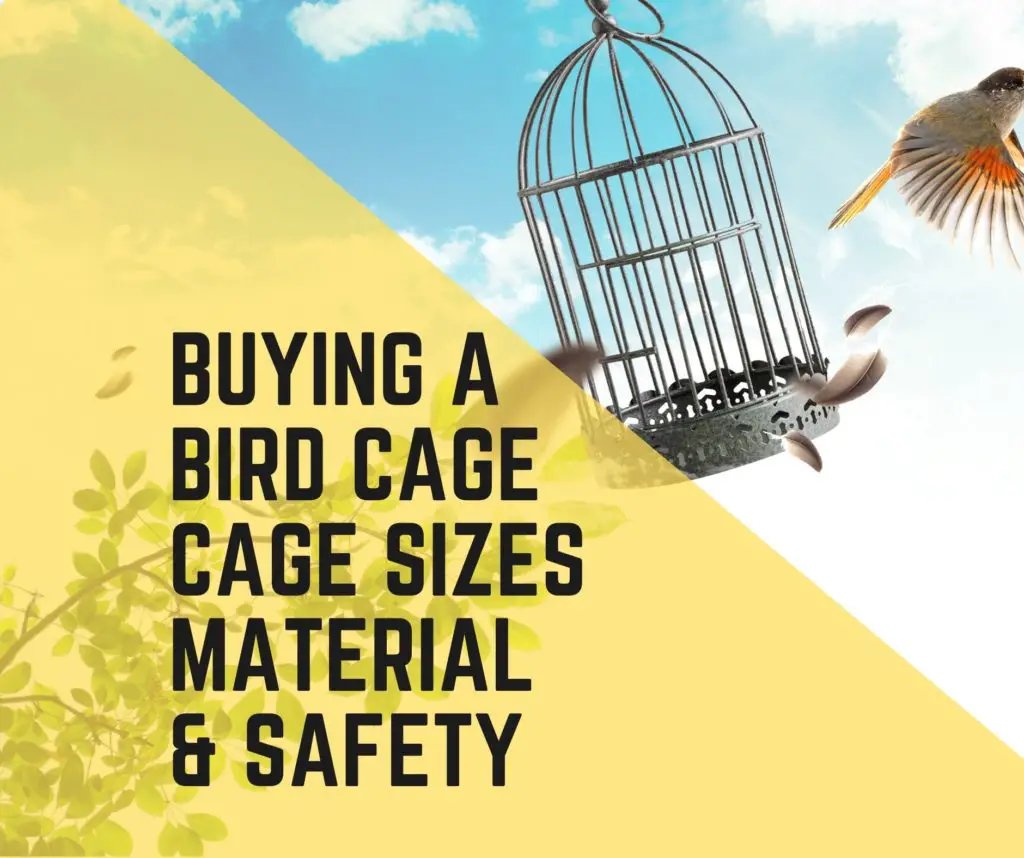Top Cages and Accessories To look for
Some birds spend quite a bit of time in their cages. Not all cages are right for all birds.
You need to look at many different factors to determine which cage is best for the safety and happiness of your bird.
Cage Sizes
For smaller birds like Cockatiels, I recommend a cage that is at least 20 inches wide by 20 inches deep by 60 inches tall.
Medium-sized birds like African greys like cages that are at least 27 inches wide by 2 feet in diameter by 5 feet 2 inches high.
Large birds such as macaws should have cages at least 4 feet wide by 3 feet in diameter by 6 1/2 feet high.
Don’t buy cylindrical cages, as they’re usually too small and birds feel insecure in them.
Cage Finishes & Materials
Most parrot cages are either made of stainless steel or they are powder coated.
Powder coating involves spraying a strong non-toxic paint color onto the cage and it usually lasts many years.
Powder coating is much cheaper than stainless steel, which is considered the “Cadillac” of cage materials because there is no chipping and stainless steel is incredibly easy to clean.
Stainless steel cages will cost considerably more than any other material.
Cage Safety
Some cages have intricate scrollwork that can catch a bird’s toe and hurt them really bad.
Some cages also have sharp edges or bars that are too wide it may prompt the bird to slide out and escape.
Don’t use older, rusted cages or antique bird cages to house live birds in.
Cages should not contain any lead or zinc, which are toxic to birds.
Most commercially sold bird cages will not contain toxic materials.
You should be cautious of cages that you purchase through a private seller, or of older cages.
Seed Skirts
Some larger cages come with seed skirts that fit around the bottom edge of the cage.
The seed skirts help to catch seeds and other debris and funnel it all to the bottom of the cage.
I’ve found these contraptions frustrating and not very useful. They’re difficult to clean and don’t catch everything.
But some people love seed skirts. If your bird is particularly messy, though, you might be better off without it.
Cages on Wheels
Some larger cages are constructed with legs and casters so that you can roll them around.
Other smaller cages are meant to sit on a table. I prefer cages with casters since I have large cages.
Casters make it easy to move birds from room to room.
Cage Grates
Most cages have a removable grate on the bottom of the cage.
The grate causes the bird’s droppings to fall through to another tray so that the bird is not exposed to her own droppings.
Grates are wonderful, but they can be a pain to clean.
Cage Accessories
Most cages will come with food dishes and at least one perch.
I prefer to use three dishes (water, dry food, wet food).
at least 3 perches made of different materials (wood, rope, concrete) in the cage.
Toys should be sized appropriately to your bird, and should not overwhelm the cage.
Dome Top vs. Play Top
Many cages give you the option to buy it with either a dome top or a play top.
The dome top will give your bird more room inside the cage,
but the play top gives your bird a nice play area, often with food bowls and a spot to hang a toy or two.
If you already have some play areas for your bird, you might prefer the dome top.
For Further Reading
- How to Design Your Own Aviary?+Basic Costs
- How To Choose a Carrier for Birds?
- How To Choose an Avian Veterinarian?

Hi, There and Welcome to BirdsNews.com, is here to help you learn and care about pet birds. and this blog is a journal of everything I’ve learned.

